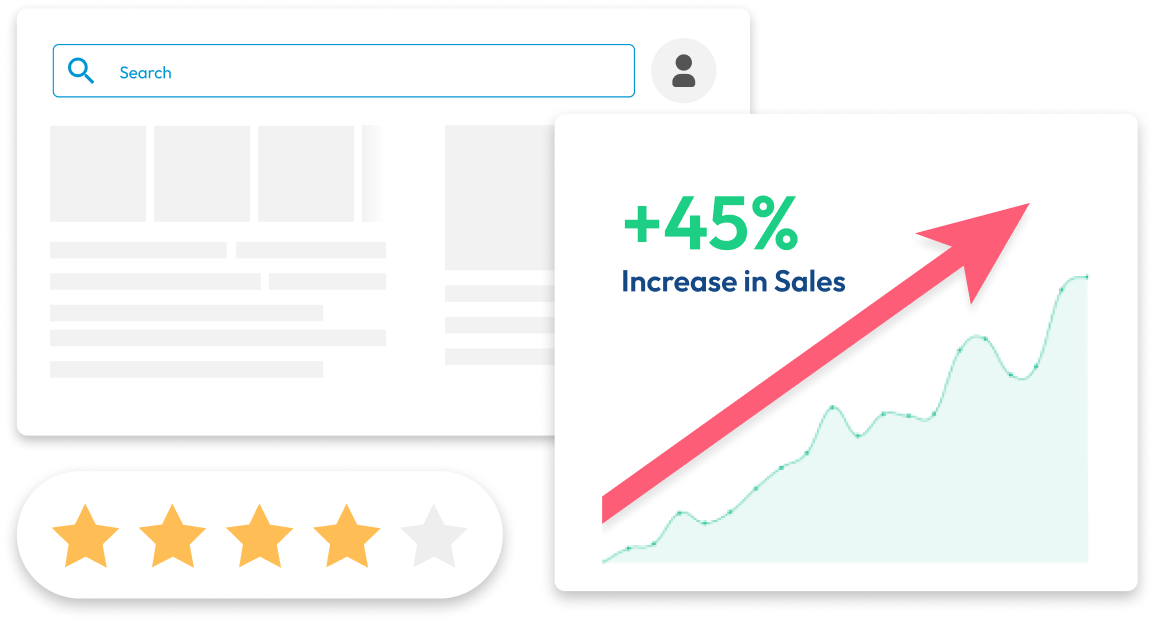Get a free consultation with us!
Stop wasting money and unlock the hidden potential of your advertising.
- Discover the power of intentional advertising
- Reach your ideal target audience.
- Maximize ad spend efficiency.

Having a website is just the first step in getting your business online. The real challenge is turning visitors into customers who keep coming back. If you're a small business owner or someone starting a new business, improving your website's ability to get visitors to buy or sign up is really important for your success. Did you know that the average conversion rate for online stores is only about 2% to 3%? This means that most visitors leave without making a purchase! Let’s look at some easy ways to improve your website so you can turn more visitors into loyal customers and help your business grow. Stop wasting money and unlock the hidden potential of your advertising. Conversion Rate Optimisation (CRO) is about improving your website so that more visitors take action - like buying something, signing up for a newsletter, or filling out a contact form. It’s about figuring out how users behave, what problems they face, and using data to improve their experience. Some key components of CRO include: Finally, remember that CRO is a continuous process. You should regularly review your strategies and make updates based on new data and user feedback. Focusing on these key components can create a more effective website that attracts visitors and converts them into loyal customers.
UX Design is very important for getting visitors to take action on your website. A well-designed website makes users happy and encourages them to do what you want them to. Here are some easy ways to improve UX on your site. Intuitive Navigation: Your website should be easy to explore. Make sure you have clear menus and a logical layout so visitors can find what they need without getting lost. Adding a search bar can also help them quickly find information. Responsive Design: Your website should work well on all devices, like smartphones and tablets. If your site looks good and functions properly on any device, users will have a better experience. Fast Load Times: If your website takes too long to load, people might leave before they see what you offer. You can speed up your site by optimising images and reducing the time it takes for your server to respond. Tools like Google PageSpeed Insights can help you find and fix speed issues. Aim for a clear and consistent layout to create a great user experience. Use a clean design with lots of white space, and keep your fonts and colours the same throughout the site. Highlight important buttons, like calls to action (CTAs), using bright or contrasting colours to make them stand out. Here are some tips to keep in mind: By following these tips for UX design, you can create a website that not only attracts visitors but encourages them to take action and become loyal customers. Landing pages are usually the first thing people see when they click on an ad or link, so they must make a great first impression. A good landing page should be focused, relevant, and persuasive. Here are some easy tips to help you improve your landing pages. To create a good landing page, you need to focus on certain design elements that catch attention and encourage visitors to take action. Here are some key tips:
By following these tips, you can create landing pages that attract visitors and encourage them to take action. A well-optimised landing page can help your website succeed!
A/B testing is a powerful way to improve your website's performance. You can determine which works better by comparing two webpage versions and make decisions based on real data. Here’s how to conduct A/B tests effectively. Analytics tools are essential for tracking your website's performance and improving conversions. Here’s how to use analytics effectively: Set Up Goals: In Google Analytics, define specific goals you want to achieve, such as form submissions or purchases. This will help you track how well your site is reaching those goals. Analyse User Behaviour: Use reports like Behaviour Flow to see how users navigate your site. This helps you identify where visitors drop off and where you can make improvements. Monitor Key Metrics: Monitor important metrics like bounce rate (the percentage of visitors who leave after viewing only one page), average session duration (how long visitors stay on your site), and pages per session (how many pages they view). Use these insights to make informed decisions. By effectively using A/B testing and analytics, you can continuously improve your website and increase conversions, making it a more effective tool for your business. Learning from successful website optimisation strategies can provide valuable insights. Here are some case studies to inspire your efforts: 1. ClickMechanic ClickMechanic, a UK-based auto repair marketplace, faced issues with potential customers hesitating to book services due to pricing concerns and a lack of transparency regarding the mechanics performing the repairs. They adjusted their pricing to be more competitive and added a feature allowing customers to view mechanic profiles before booking. This increased transparency helped build trust among users. These changes led to a 60% increase in revenue within just two months and a 10% increase in conversions. Redesigning their landing pages also resulted in an additional 15% increase in conversion rates. 2. Love Child Organics: Visual and Targeting Improvements Love Child Organics aimed to boost conversions on its product pages but faced challenges with user engagement. To improve performance, they revamped their landing pages by enhancing visuals and refining their targeting strategies. They experimented with different images, swapping photos of babies for toddlers, and adjusted their ad targeting to better connect with their audience. These changes led to impressive results. After eight months of optimisation, their conversion rate increased from 43% to 69%, and their cost-per-acquisition (CPA) dropped from $2.00 to $1.30. This marked a significant 60% improvement in conversion rates, allowing them to showcase their products better and effectively transition into e-commerce. These case studies provide valuable insights into how different strategies can significantly improve website performance and conversions.
Website optimisation is an ongoing process. You must continuously test, analyse, and adapt your strategies to stay competitive. Here are some helpful tips for making continuous improvements to your website: By focusing on continuous improvement and staying updated with the latest trends and user feedback, you can ensure your website remains effective and meets the needs of your visitors. This proactive approach will help you achieve long-term success in your online efforts. Optimising your website for conversions involves understanding how people use your site, analysing data, and testing different strategies to see what works best. If you need expert help, consider partnering with Xugar, the best digital marketing agency in Australia. Our team can create a tailored strategy to optimise your website and drive results. Start implementing these strategies today and watch your conversions soar!
Get a free consultation with us!

Understanding Conversion Rate Optimisation (CRO)
User Experience (UX) Design
Best Practices for UX Design
Optimising Landing Pages
Content Strategy for Landing Pages
A/B Testing
Using Analytics for Optimisation
Identifying Areas for Improvement
Case Studies
Continuous Improvement and Staying Updated
Optimise Your Website for Conversions with Sagar and His Team
You can significantly boost your conversion rates and grow your website by continuously updating and testing your website.





WINNER

FINALIST

FINALIST

WINNER

WINNER

FINALIST

FINALIST

WINNER
